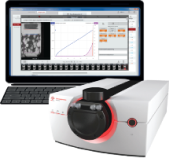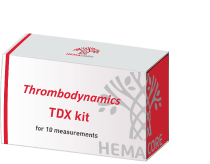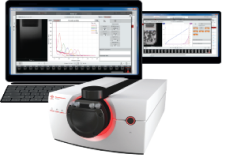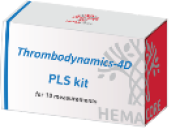THROMBODYNAMICS METHOD
In most methods of laboratory diagnostics of the blood coagulation system, an excess of coagulation activator and subsequent mixing are used, that is, the processes occurring in vitro, when setting the test, are fundamentally different from the conditions for coagulation in vivo, in the human body.
In the Thrombodynamics method, on the contrary, the process is triggered by a spatially localized physiological coagulation activator (protein tissue factor) in a spatially heterogeneous system, where there is no mixing, and diffusion processes of factors that play an important role in the hemostasis system can be taken into account.
The implementation of this technology formed the basis of several tests for assessing the state of hemostasis that we can offer today:
THROMBODYNAMICS
Registration and evaluation of parameters of spatial formation of fibrin clot in blood plasma
Research use only


Thrombodynamics TDX Kit
More aboutTHROMBODYNAMICS IN FIBRINOLYSIS MODE
Registration and evaluation of the parameters of spatial formation and lysis of fibrin clot in blood plasma
Research use only

THROMBODYNAMICS-4D
Registration and evaluation of parameters of spatial formation of fibrin clot + thrombin propagation
Research use only


Thrombodynamics-4D PLS Kit
More aboutTHROMBIN GENERATION TEST
The Thrombodynamics-4D test additionally evaluates the parameters of thrombin generation
Research use only